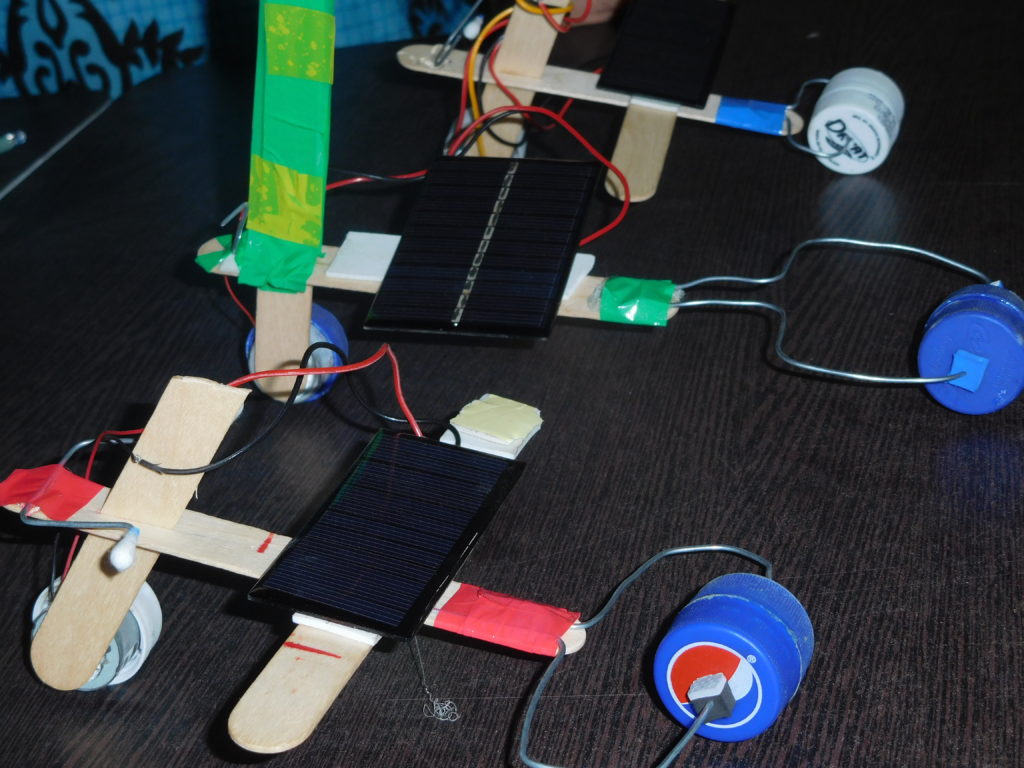Introduction
Project Tinker lab is meant to nurture the inherent curiosity and creativity of children by exposing them to a plethora of low-cost STEM(Science Technology Engineering Mathematics) toys and activities which can be made using everyday materials.
Today, outcome-oriented learning has become a norm over inquiry-based and experiential learning. Giving children the freedom to ask the question, to fail, to try out new things and then make their own conclusion about the questions which matter to them makes the learning-environment process driven. This will enhance their self-esteem and confidence and make them original creative thinkers and doers.
The goal is to set up in-school Tinker lab led by a core team of middle school students and teachers who become excited and motivated enough to “Create their own DIY Science Lab! and DIY Maths lab” These toys/exhibit/activities could be used by other teachers and students as a demonstration during classroom teaching.
Why to make your own Science Lab and Maths lab?
The central theme of all the innovation and discoveries is the innate desire to solve something close to their heart and the road is organically an interdisciplinary one since the real-life problems generally don’t come domain specific. Making DIY Science Lab and Math lab as the project of the club members can be beneficial in many ways,
as it
● Makes one resourceful
● Helps connect with local community/surrounding
● Plants seeds of for design and technology
● Teaches us to collaborate and work together
● Enables one to be producer of knowledge instead consumer
● Sense of gratitude in contributing to the community
● Opportunity to nurture your own ingenuity
● Boost to Intrinsic motivation to discover surprises and sharing it
● Opportunity to authentically engage in learning scientific principles and mathematization of thoughts.
● Build self-esteem and confidence The beauty of this space will be sense of empowerment since everything will be made using local materials and tools.
This will also overcome the fear from the mind of the children and teachers to play with the exhibit because he/she know that if it gets broken, it can be repaired locally and at affordable cost. This in turn will invite one to tinker and the real process of learning starts!
Therefore, striving to create a learning environment which allows children to ask questions, to reflect on the nature of the problem and to design solutions understanding the needs of the beneficiaries will lead to building a culture of thinking with hands in school ecosystem. It takes time to imbibe and internalize. So, when we integrate STEM with design thinking, open culture and bring that in the classrooms – magic with happen!
Maths Lab-
Theme- to shift Perspective and pedagogy from algorithm approach to mathematical reasoning
The basic idea is to improve quality of mathematics education and provide better learning experience for children in schools through improving the capacities of –
- Teacher’s perspective on mathematics education
- Content knowledge
- Appropriate pedagogic approaches that work given the child’s context and developmental stage.
This requires regular academic engagements with teachers and this cannot be achieved just though training or workshop alone.
Multimode-
- Workshop
- Discussion
- Seminar
- Melas
- Reading of Science, Mathematics books by students, its briefing, and cutting of press note about the science matters and particular articles from certain magazine and prepare album at school level.
- Organize debate on science and math’s subjects.
- Celebration of Scientist birthday.
- To prepare question bank in science-math’s for primary school teachers.
- To demonstrate some practical work for teachers as well as students.
- To carried out small scale research work.
- Magic experiments relating to Science-Math’s.
- Experiments based on science-Math’s kit.
- Origami Workshop.
- Puzzle and Quiz
- Presentation of low cost scientific toys
About the initiative
In this initiative, we will work with teachers and children from the respective school for an over a period of 6 months. The teams will be exposed to various creative science and maths experiences( toys/stories/activities) which they can make mostly from everyday materials.
● Explore science and maths concepts through the hands-on design and prototyping of toys and gadgets.
● Follow a lab format, students develop models over the course of 6 months, working individually or in small groups.
● Consideration is given to material selection, form and interaction, assembly, and usefulness
● Develop multiple prototypes throughout the period, iterating and refining their design
● Students are expected to document their progress on online platform such as “Telegram”/”What’s app” throughout the period of engagement.
● The design of the program is based on Constructionism ○
Teachers as Facilitators
○ Children work in a group

○ Build physical artefact
○ Take Feedback